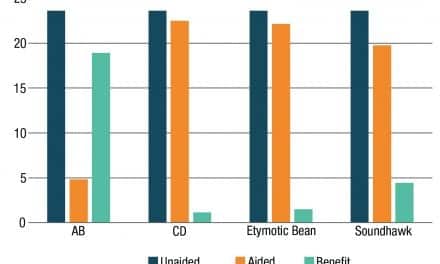Around 45% of children in Austrian day nurseries have a first language other than German. Those who our experiencing difficulty in learning the second language are often diagnosed as having a suspected “impairment of language acquisition.” In fact, this often merely reflects the fact that they have not yet fully acquired the second language.
A research team of linguists led by Brigitte Eisenwort from the Outpatient Clinic for Children with Suspected Language Acquisition Impairments at MedUni Vienna’s Department of Pediatrics and Adolescent Medicine has now investigated the problem in the context of a case study. This study applied the “Vienna Model,” which incorporates medical students who are native speakers of the child’s first language to facilitate more accurate diagnosis, according to a press release on the Medical University of Vienna website.The study has now been published in the journal Neuropsychiatrie.
In 2019, an average of around 2.1 million Austrian inhabitants came from a migration background. Due to the changing demographic due to migration over the last few decades, more and more children are growing up multilingual. Many of them display problems in learning their second language (German) and are often diagnosed as having a suspected “impairment of language acquisition,” whereas the real problem is that they have not yet fully acquired their second language. This is due to the similarity between the manifesting features, which can only be differentiated by specialists.
Seeking a more accurate diagnosis, many of these children with a migration background attend the Outpatient Clinic for Children with Suspected Language Acquisition Impairments at MedUni Vienna’s Department of Pediatrics and Adolescent Medicine, which has capacity to assess four children per week. The clinic uses the “Vienna Model” of language assessment, which means that medical students, who are native speakers of the child’s mother tongue, support MedUni Vienna linguists in analyzing the child’s language competence in their first language. This has the advantage that specific cultural aspects can be identified as well as grammatical skills.
“While, in principle, we could also use native speakers studying other subjects to help us, involving medical students has the great advantage that it simultaneously gives them experience in doctor-patient communications and furnishes them with background knowledge about developmental disorders and in particular language acquisition impairments as part of their studies,” explains Eisenwort.
Of around 40 children assessed in 2019, around half were found to have no clinically relevant language acquisition impairment. Instead, the problem lay with disruptive sociolinguistic factors, such as limited input in their mother tongue, for example.
Says Eisenwort: “Many children with a migration background receive a restricted input in their mother tongue, since the parents themselves had acquired a mother tongue that was suppressed for political reasons, for example, and therefore were unable to pass on a rich vocabulary or, in the process of migration, no longer have any need for complex sentence structures and sophisticated vocabulary, so that they are no longer able to pass these on to their children.”
According to Eisenwort, a key factor in assessing a child is to first take a detailed language history and then assess the child in both or all languages. Eisenwort suggests that an important measure for improving language competence in the majority language would be to give children the opportunity to communicate with native German speakers in small groups. The next research project, which will start shortly, is a joint project with the Acoustics Research Institute of the Austrian Academy of Sciences (ÖAW) looking at “Viennese children with a native language other than German,” in which the focus will be on phonetic and phonological skills of children who grow up bilingual with a Bosnian-Croatian-Serbian mother tongue.
Original Paper: Eisenwort B, Schmid C, Tilis M, et al. Important aspects in the assessment of bilingual children with suspected language impairment: The Vienna Model. Neuropsychiatrie. 2020. DOI: https://doi.org/10.1007/s40211-020-00361-x.
Source: Medical University of Vienna, Neuropsychiatrie




